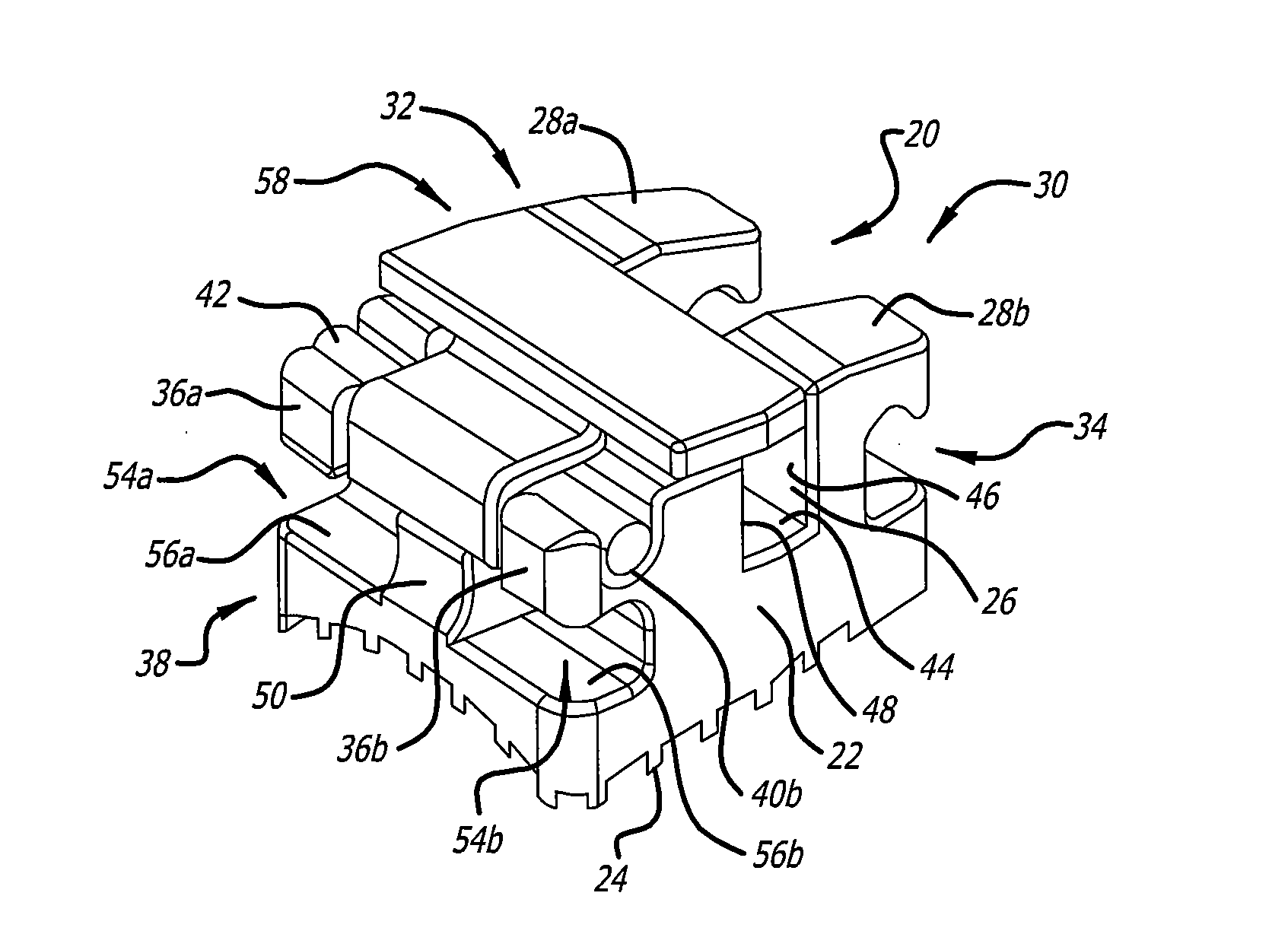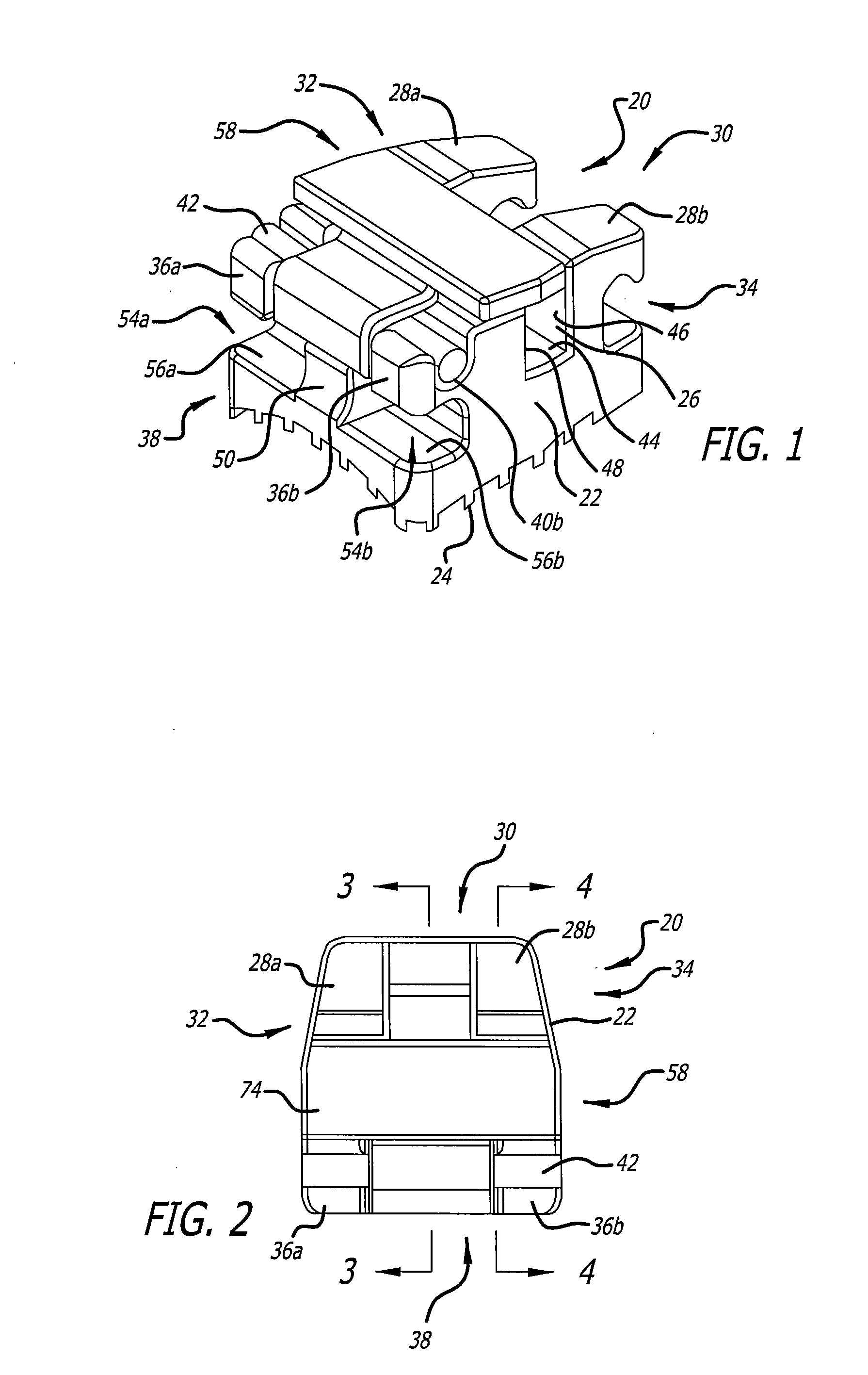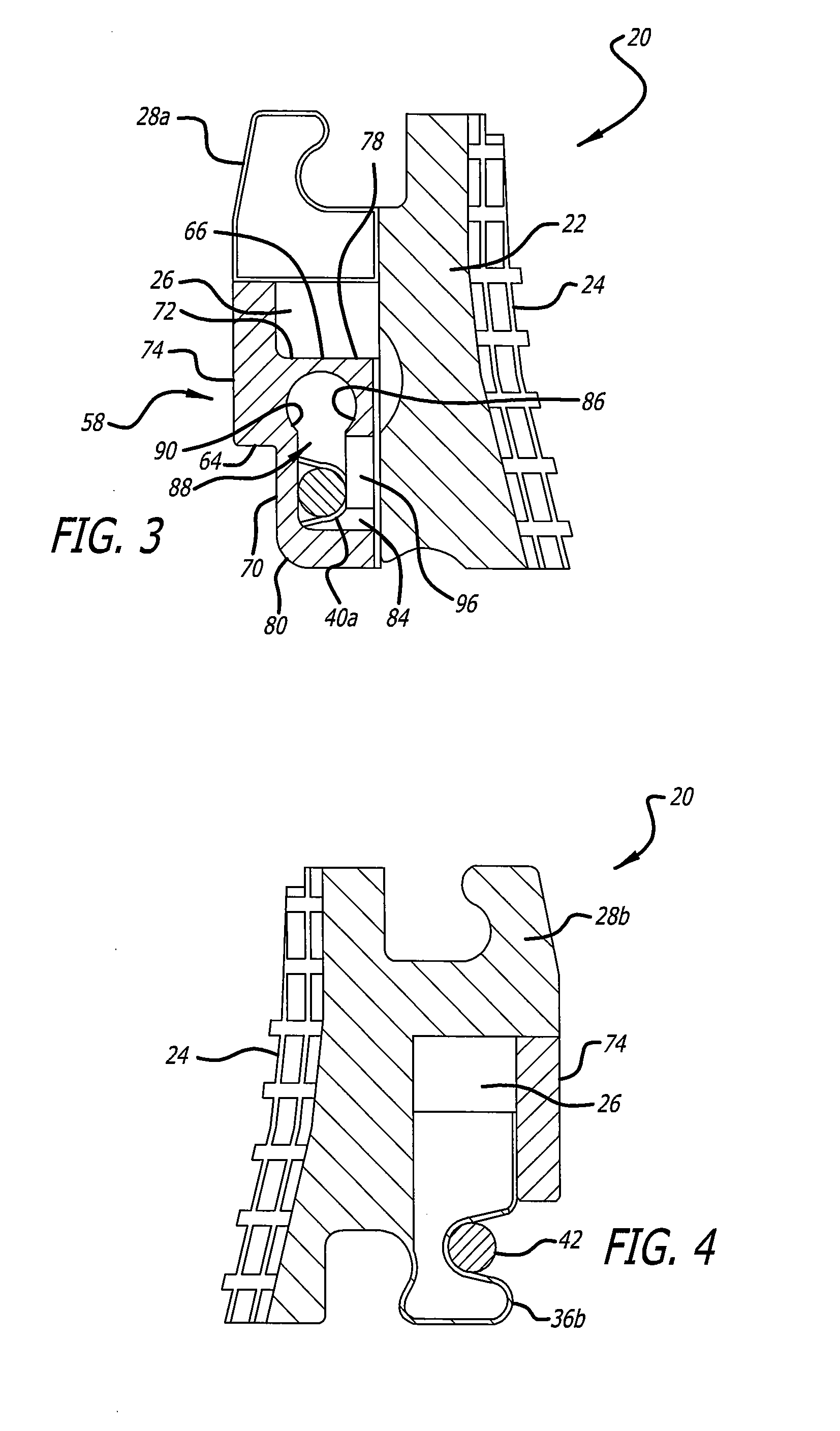Self-ligating orthodontic bracket
a self-ligating, orthodontic technology, applied in the field of brackets, can solve problems such as tooth decay or infection, and achieve the effect of sufficient flexibility
- Summary
- Abstract
- Description
- Claims
- Application Information
AI Technical Summary
Benefits of technology
Problems solved by technology
Method used
Image
Examples
first embodiment
[0035]Referring to FIGS. 1-7B, in the present invention, the self-ligating orthodontic bracket 20 includes a molded unitary body 22 having a base 24 that is defined on the bottom side configured to be joined to an orthodontic band or configured to be adhered to a tooth surface (not shown). The bonding base is currently preferably formed to have a bottom rectangular grid forming a plurality of rectangular pockets. The unitary body can be formed of metal, metal alloy, ceramic, plastic, polymer, composite, or other similar materials, for example. The body also is also preferably formed to include an archwire slot 26 configured to receive an archwire (not shown). The body may also include a plurality of tiewings, such as a pair of spaced apart tiewings 28a, 28b, on the gingival 30 mesial 32 and distal 34 sides of the body.
[0036]Referring to FIGS. 1 and 5, in a presently preferred aspect, the bracket body includes pair of spaced apart mounting arms 36a, 36b, on the occlusal 38 mesial and...
second embodiment
[0041]Referring to FIGS. 8-14, in the present invention, the self-ligating orthodontic bracket is implemented in a molar buccal tube bracket 100 having a unitary body 102 including a base 104 defined on a bottom side configured to be joined to an orthodontic band or configured to be adhered to a tooth surface (not shown). This type of bracket is typically used on the molar teeth (1st molar, and 2nd molar) for straightening and alignment. The bonding base is currently preferably formed to have a bottom rectangular grid forming a plurality of rectangular pockets. The unitary body can be formed of metal, metal alloy, plastic, polymer, composite, or ceramic, for example, although other similar materials may also be suitable. The bracket body also is also preferably formed to include an archwire slot 106 that is configured to receive an archwire (not shown), for anchorage and straightening of the tooth.
[0042]The bracket body optionally may also include an auxiliary tube 108 on the gingiv...
PUM
 Login to View More
Login to View More Abstract
Description
Claims
Application Information
 Login to View More
Login to View More - R&D
- Intellectual Property
- Life Sciences
- Materials
- Tech Scout
- Unparalleled Data Quality
- Higher Quality Content
- 60% Fewer Hallucinations
Browse by: Latest US Patents, China's latest patents, Technical Efficacy Thesaurus, Application Domain, Technology Topic, Popular Technical Reports.
© 2025 PatSnap. All rights reserved.Legal|Privacy policy|Modern Slavery Act Transparency Statement|Sitemap|About US| Contact US: help@patsnap.com



